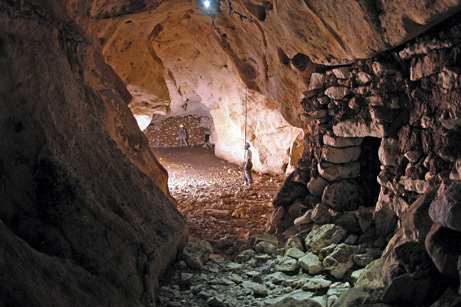It’s been a while since I did a “this recent discovery suggests Lovecraftian spookiness” post, so let’s do one of those.
According to National Geographic, a series of partially underwater temples—”A labyrinth filled with stone temples and pyramids in 14 caves”— have been found off the Yucatan.

The article talks about how these temples map onto legends of the Mayan underworld, and might represent the “gateway” to this underworld, but we know better, don’t we?
A hidden series of maze-like caverns, partly underwater, near an isolated coastal settlement? Come on, this is Deep Ones up and down. All the archaelogists need to do is find one of those El Profundo carvings and the deal is sealed. And it’s not like the notion of time and space breaking down (a clear sign of intrusion by the Old Ones!) in the vicinity of Mayan temples is unheard of.
Not buying it? Check out this snippet from the article:
In one of the recently found caves, researchers discovered a nearly 300-foot (90-meter) concrete road that ends at a column standing in front of a body of water.
“We have this pattern now of finding temples close to the water—or under the water, in this most recent case,” said Guillermo de Anda, lead investigator at the research sites.
“These were probably made as part of a very elaborate ritual,” de Anda said. “Everything is related to death, life, and human sacrifice.”
A giant monolith at the water’s edge? A highway to human sacrifice at the water’s edge? Temples under water? Come on—this is Lovecraft country!
Here’s a snippet showing Lovecraft’s pillar at the waterside:
Dazed and frightened, yet not without a certain thrill of the scientist’s or archaeologist’s delight, I examined my surroundings more closely. The moon, now near the zenith, shone weirdly and vividly above the towering steeps that hemmed in the chasm, and revealed the fact that a far-flung body of water flowed at the bottom, winding out of sight in both directions, and almost lapping my feet as I stood on the slope. Across the chasm, the wavelets washed the base of the Cyclopean monolith, on whose surface I could now trace both inscriptions and crude sculptures.
I’m just saying…

